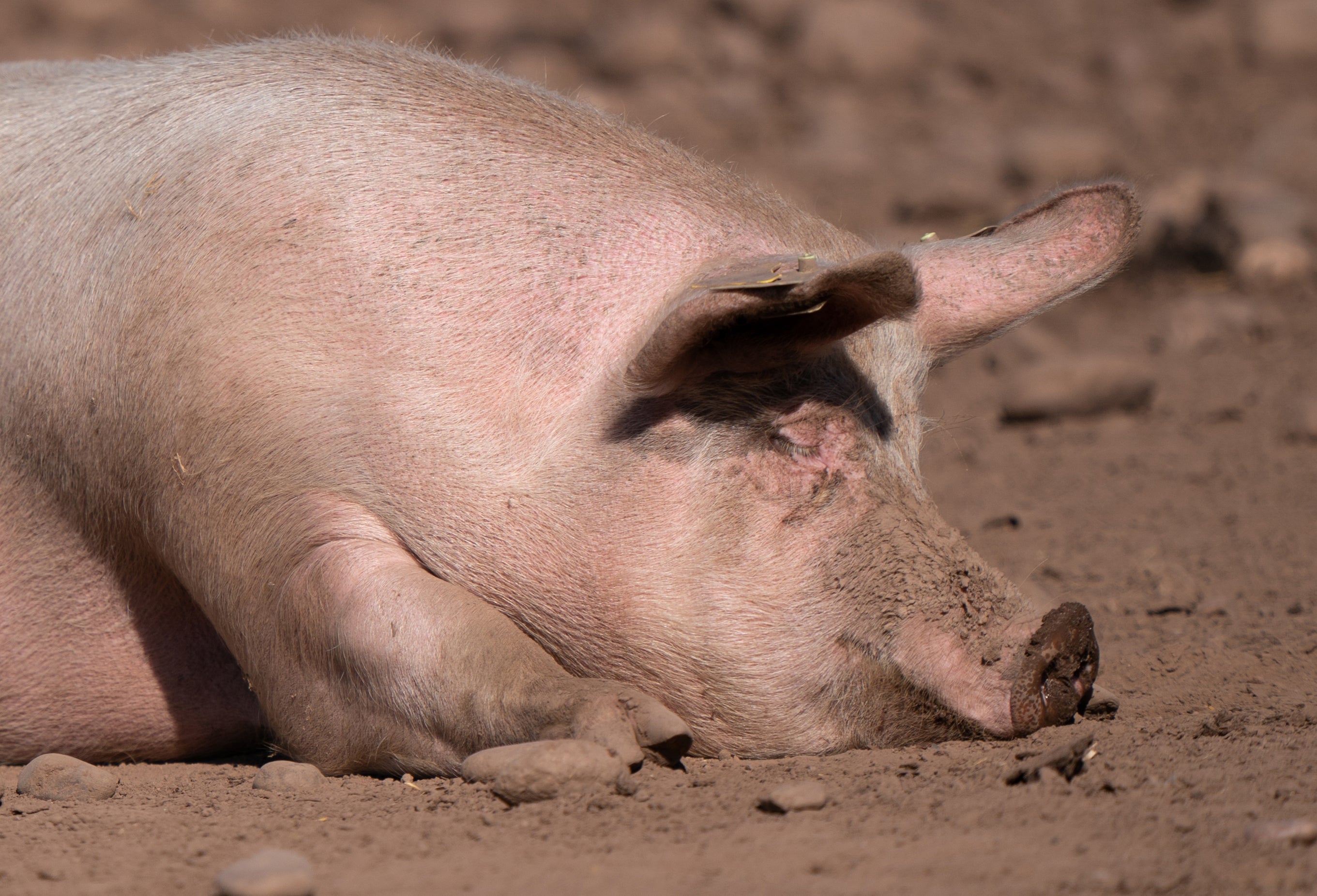Pig grunts translated into emotions for the first time – study
The findings suggest farmers could set up an automated recognition system to alert them to when their pigs are distressed.

Your support helps us to tell the story
From reproductive rights to climate change to Big Tech, The Independent is on the ground when the story is developing. Whether it's investigating the financials of Elon Musk's pro-Trump PAC or producing our latest documentary, 'The A Word', which shines a light on the American women fighting for reproductive rights, we know how important it is to parse out the facts from the messaging.
At such a critical moment in US history, we need reporters on the ground. Your donation allows us to keep sending journalists to speak to both sides of the story.
The Independent is trusted by Americans across the entire political spectrum. And unlike many other quality news outlets, we choose not to lock Americans out of our reporting and analysis with paywalls. We believe quality journalism should be available to everyone, paid for by those who can afford it.
Your support makes all the difference.A pig’s grunts, oinks and squeals can reveal its emotions, a study that paves the way for better animal welfare has found.
Using thousands of recordings gathered throughout the lives of pigs, from birth to death, a team of researchers is the first in the world to translate pig grunts into actual emotions.
The findings suggest farmers could set up a system to alert them to when their pigs are distressed, for example when piglets are fighting.
Researchers designed an artificial intelligence algorithm, essentially a pig translator, that decoded whether an individual pig is feeling a positive emotion, happy or excited, or a negative one, scared or stressed.
We also prove that an algorithm can be used to decode and understand the emotions of pigs, which is an important step towards improved animal welfare for livestock
According to the study, it can even tell if the animal’s mood is somewhere in between the two.
Associate Professor Elodie Briefer of the University of Copenhagen’s Department of Biology at the University of Copenhagen, who co-led the study, said: “With this study, we demonstrate that animal sounds provide great insight into their emotions.
“We also prove that an algorithm can be used to decode and understand the emotions of pigs, which is an important step towards improved animal welfare for livestock.”
She added: “We have trained the algorithm to decode pig grunts.
“Now, we need someone who wants to develop the algorithm into an app that farmers can use to improve the welfare of their animals.”
Pig sounds were recorded in both commercial and experimental scenarios, which based on the behaviour of the pigs, are either associated with a positive and negative emotion.
Positive situations can include when piglets suckle from their mothers or when they are united with their family after being separated.
While the situations associated with negative emotions include separation, fights between piglets, castration and slaughter.
Various mock scenarios were created for the pigs, designed to evoke more nuanced emotions in the middle of the spectrum.
These included an arena with toys or food and a corresponding arena without any stimuli.
Researchers also placed new and unfamiliar objects in the arena for the pigs to interact with.
The calls, behaviour and heart rates of the animals were monitored and recorded when possible.
More than 7,000 audio recordings were analysed to see if there was a pattern in the sounds as a function of the emotions, and if researchers could tell apart positive and negative situations and emotions.
More high-frequency calls, such as screams and squeals in negative situations, were associated with negative emotions, as suggested by previous research.
While low-frequency calls such as barks and grunts occurred both in situations where the pigs experienced positive or negative emotions.
The situations between the extremes were particularly interesting, and the study, also led by the ETH Zurich and France’s National Research Institute for Agriculture, Food and Environment (INRAE) found a new pattern that revealed what the pigs experienced in certain situations in even greater detail.
Dr Briefer said: “There are clear differences in pig calls when we look at positive and negative situations.
“In the positive situations, the calls are far shorter, with minor fluctuations in amplitude.
“Grunts, more specifically, begin high and gradually go lower in frequency.
“By training an algorithm to recognise these sounds, we can classify 92% of the calls to the correct emotion.”
She suggests that with enough data to train the algorithm, the method could also be used to better understand the emotions of other mammals.
Sixteen researchers from Denmark, Switzerland, France, Germany, Norway and the Czech Republic participated in the study published in Scientific Reports.